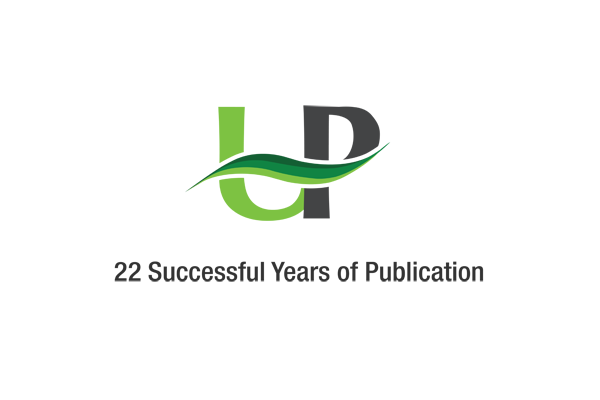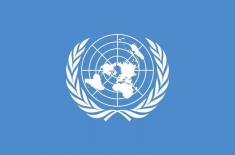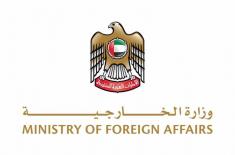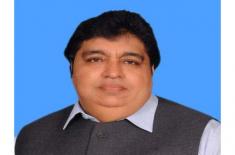
Speakers Highlight DRF’s Key Role In Building Resilience, Institutional Capacity
Sumaira FH Published August 07, 2025 | 10:12 PM

Speakers at a daylong international seminar on Thursday highlighted the importance of strengthening Disaster Risk Financing (DRF) to enhance resilience before, during and after natural catastrophes, stressing the need to build the institutional capacity of relevant departments to effectively manage disaster-related risks
ISLAMABAD, (UrduPoint / Pakistan Point News - 7th Aug, 2025) Speakers at a daylong international seminar on Thursday highlighted the importance of strengthening Disaster Risk Financing (DRF) to enhance resilience before, during and after natural catastrophes, stressing the need to build the institutional capacity of relevant departments to effectively manage disaster-related risks.
The seminar titled “Disaster Risk Financing to Strengthen Pakistan’s Financial Resilience,” was organized by the National Disaster Risk Management Fund (NDRMF) under the umbrella of the Ministry of Planning, Development and Special Initiatives and the Ministry of Finance.
It brought together a distinguished group of national and international experts, policymakers, development partners, financial institutions, and insurance sector representatives.
With climate and disaster-related risks escalating, the speakers were of the view that Pakistan was shifting towards proactive financial protection and preparedness, describing it more crucial than ever in building fiscal resilience, reducing economic losses, and safeguarding vulnerable communities.
They focused on key areas including current challenges and opportunities in DRF implementation, progress on DRF initiatives in Pakistan, exploration of sovereign and non-sovereign DRF instruments, role of media in shaping public understanding and policy support.
In his virtual address, Arup Kumar Chatterjee, Unit Head for Capital Markets and Insurance at the Asian Development Bank (ADB), highlighted the urgency of advancing DRF to protect lives and livelihoods in Pakistan.
Citing the 2022 floods, he posed a central question: What if Pakistan had a $500 million DRF buffer in place before disaster struck?
Chatterjee said that resilience must be financed before a disaster occurred, not afterward, outlining a layered DRF structure including budgetary reserves for frequent low-impact events, contingent credit lines for mid-level shocks, and insurance or catastrophe bonds for rare, high-impact disasters.
Chatterjee called for multi-stakeholder DRF simulations, disaster stress testing, and risk-informed public financial management.
He urged Pakistan to align its 10-year DRF strategy with national development plans, and position itself as a regional leader in financial resilience through innovation, community engagement, and cross-sector collaboration.
ADB Country Director for Pakistan Xiaoqin Fan called for transitioning from reactive disaster response to a proactive and risk-informed financing framework.
She said the seminar was held at a critical time as Pakistan intensified efforts to integrate climate and disaster resilience into its financial planning, commending the government, NDRMF and SUPARCO for launching Pakistan’s first 10-Year DRF Strategy and the National Catastrophe Risk Model, both of which provide a foundation for a disaster-resilient financial architecture.
The bank, she said, was also working with Pakistan to develop an inclusive insurance market, including health coverage for farmers, protection for public assets, and micro-insurance for vulnerable households.
UNDP Resident Representative Samuel Rizk emphasized the urgent need for proactive and inclusive disaster risk financing in Pakistan, underscoring that climate risks were no longer hypothetical, but recurring and intensifying.
He acknowledged Pakistan’s recent macroeconomic stabilization, which now made the country a more "bankable" environment for investment, but stressed that structural development indicators such as gender parity and inclusive growth still lagged and must be prioritized to reinforce resilience.
Rizk highlighted ongoing UNDP collaborations with institutions like NDRMF, NDMA, SECP, and other UN agencies to bridge gaps in DRR (Disaster Risk Reduction) implementation.
He particularly pointed to Pakistan’s global leadership in completing the in-country process for the Global Shield Against Climate Risks, making it the first in Asia and second worldwide.
He said UNDP remained committed to supporting Pakistan through capacity building, partnerships, and technical assistance to ensure that resilience financing reached institutions, communities and individuals before any future disaster strike.
Earlier in his opening remarks, Chief Executive Officer of NDRMF Bilal Anwar stressed the urgency of addressing the growing frequency and severity of climate-induced disasters.
He said Pakistan was no longer just a victim of climate change but a frontline state bearing its harshest consequences as over the past two decades it endured over $50 billion in losses—more than 10 per cent of its GDP, affecting millions through displacement, loss of livelihoods, and destruction of both natural and physical infrastructure.” Many of these damages remain unrecovered, while the deeper human and social costs often go unmeasured,” he regretted.
Anwar stressed that Pakistan was in a near-constant state of crisis, calling for sustainable, long-term solutions to finance disaster response and climate adaptation.
He pointed to globally tested models of Disaster-Based Financing, which provided prearranged and predictable financial support for disaster recovery.
These systems, he said, helped protect essential services, like education and healthcare, and deliver timely assistance to vulnerable populations such as small farmers and remote communities, adding “Such financing frameworks have proven effective in minimizing the broader impacts of disasters and ensuring faster recovery.”
The NDRMF, the CEO said, was now repositioning itself from a traditional funding body to a visionary platform, seeking collaborative and institutionalized approaches to build fiscal resilience.
He called for international support including financial, technical and intellectual- to help shift from reactive disaster relief to proactive preparedness.
DG SUPARCO Amjad Ali highlighted two key areas including the developmental challenges Pakistan faced particularly in disaster management and mitigation, and how space technology could help address them.
He emphasized that one of the most critical issues was the inadequate understanding of risks, which often led to preventable losses.
He said space technology offered a unique vantage point to analyze, monitor and respond to these challenges effectively, enabling better planning, early warning, and informed decision-making.
Executive Director of the Sustainable Development Policy Institute (SDPI) Abid Sulehri said developing countries like Pakistan faced greater challenges in rebuilding and restoring normalcy after disasters due to limited resources and institutional capacity.
Sulehri commended the efforts of NDRMF and SUPARCO for developing the NatCat (Natural Catastrophe Model), a data-driven tool providing critical insights into vulnerable regions, expected losses, and disaster financing needs.
He stressed that no financing strategy could be effective without credible, verifiable data and tools like NatCat model that were foundational for integrating disaster risk into national investment planning.
Recent Stories

UAE to participate in UCI Para-cycling Road World Championships in Belgium

Israel's plan to take control of Gaza risks deepening 'already catastrophic cons ..

UAE condemns, denounces in strongest terms Israeli government’s decision to oc ..

UAE Boxer advances to final of Asian Boxing U19 & U22 Boxing Championships

Ministry of Defence undersecretary visits Sacheon Air Base in Korea

State Minister for Religious Affairs and Interfaith Harmony Kesoo Mal Kheal high ..

Rana urges PTI to change attitude for resolving political issues

Shah Bhitai's urs to commence on Saturday

Govt launches “Agri Stack” plan to digitize Pakistan’s farming sector

Only 48.4% of Pakistani children exclusively breastfed:WHO

UAE leaders condole with President of Ghana over helicopter crash victims

Two killed in Lakki Marwat firing
More Stories From Business
-

Eco-friendly Tannery Zone set up in Sialkot: Kanwal Liaquat
6 hours ago -

GCWUF earns international spotlight in INQAAHE Newsletter
7 hours ago -

JICA nods commitment for $250m WASA projects
7 hours ago -

Nine development schemes worth Rs 22.181b approved
11 hours ago -

Banks to open on Saturday for collecting Hajj applications: SBP
10 hours ago -

Rana Tanveer holds meeting with Jahangir Piracha on fertilizer availability, pricing
11 hours ago
-

Cyber security capacity building training for financial, fintech sectors concludes
11 hours ago -

State Bank of Pakistan (SBP) injects over Rs 1 trillion in the market
11 hours ago -

"Governor of Khyber Pakhtunkhwa, Faisal Karim Kundi Meets Commerce Minister to Discuss Trade and Inv ..
11 hours ago -
Algeria, Pakistan's Fatima Group sign MoU to boost phosphate fertilizer production
11 hours ago -

Manufacturing sector revival key to economic growth: Special Assistant to the Prime Minister (SAPM) ..
11 hours ago -

CCP, PIPS join hands to support policymakers with research-based analysis
11 hours ago
















